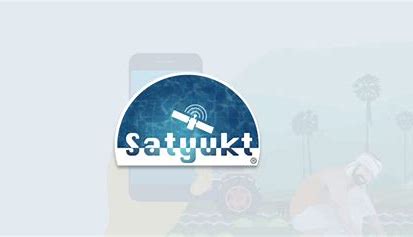Drones and the Internet of Things (IoT) have the potential to revolutionize agriculture by giving farmers access to data that will allow them to significantly increase productivity. However, those technologies may be too costly for small and marginal farmers in a nation with fewer than two hectares of land. Satyukt, based in Bengaluru, aims to use machine learning, open-source satellite data, and a mobile app to address that issue.
Satyukt is supplying farmers with the vital information they require for increased yields by utilising open-source satellite data from institutions like NASA, the European Space Agency, ISRO, and other space agencies. The business uses machine learning and advanced analytics to process enormous volumes of raw data and provide information straight to smartphones.
“Although our service is feature-rich, it focuses on three primary problems that farmers have. One is being aware of the appropriate amount and timing of fertilizer application. Resolving illnesses and pests comes in second. The third is water resource management, which includes how much water to use and how frequently crops need to be watered, according to Sat Kumar Tomer, CEO and creator of Satyukt, who spoke with indianexpress.com.
In addition to having received his PhD in Hydrology and Water Resource Sciences from the Indian Institute of Science in Bengaluru, Tomer is somewhat qualified to make that claim because he was raised in an agrarian household.
Farmers and their service partners can designate the borders of their land and obtain information through the Satyukt smartphone app. Each acre will pay roughly Rs 100 for the service each month. But how does the business use satellite data to determine soil quality, moisture content, and other information?
According to Tomer, Satyukt usually uses earth observation satellites that gather data in 11 bands. This comprises information mapped onto the visible spectrum, such as red and blue colors. However, it furthermore contains thermal and infrared data. After gathering spectroscopic data from soil samples collected around the nation, Satyukt uses the information to train and evaluate a machine learning algorithm that extracts details about the quality of the soil from the data.
This implies that the algorithm can derive soil quality and water content information from satellite data of the soil in a given area. Data on soil quality is used to advise farmers on the application of fertilizers. To help them make decisions about agricultural irrigation, meteorological data and soil water content data are merged. Tomer asserts that the accuracy of the fertilizer recommendations is greater than 95%.
Although there are already over 55,000 members on Satyukt, Tomer estimates that there may be nearly twice as many users because numerous farmers may be using the same account to obtain data. Using a “B2B2C” strategy, the company contacts farmers through its more than 300 channel partners. These channel partners could be anything from a huge firm sourcing food to an equipment rental company or a store selling agricultural inputs.
According to predictions from the Indian Ministry of Commerce, the space industry in the nation would be valued $9.6 billion in 2020 and is projected to reach $13 billion by 2024. Although it presently makes approximately two to three percent of the global space sector, the ministry intends to increase its share to up to ten percent by 2030. Startups are ideally suited to undertake that kind of work.
Startups that are developing rockets that can launch satellites, such AgniKul Cosmos and Skyroot, may receive a lot of attention in the industry. Building cutting-edge hardware is not the sole path to founding a space technology business, despite the critical nature of their work. Satyukt is a prime illustration. To address real-world issues, it combines machine learning, field experience, and some data that was obtained secretly with some data that was made available publicly.








